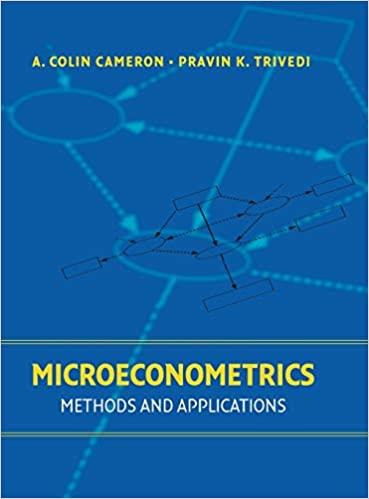In the previous problem randomization refers to treatment. Here we consider randomized eligibility for receiving the treatment.
Question:
In the previous problem randomization refers to treatment. Here we consider randomized eligibility for receiving the treatment. Now \(e=1\) means that an individual is randomly made eligible and \(e=0\) means randomly made ineligible. Show that in this case, given \(\operatorname{Pr}[d=1 \mid \mathbf{x}] eq 0\), the treatment effect is given by \(\mathrm{E}[y \mid e=1, \mathbf{x}]-\mathrm{E}[y \mid e=0, \mathbf{x}] / \operatorname{Pr}[d=1 \mid \mathbf{x}]\).
Previous problem
Consider the treatment-outcome model \(y=\) \(\mathbf{x}^{\prime} \boldsymbol{\beta}+\alpha d+\varepsilon\), where \(d\) is a binary indicator variable taking the value 1 if treatment is assigned randomly and 0 if treatment is not assigned (also randomly).
(a) Is randomized treatment a sufficient condition for identification of \(\alpha\) ?
(b) Is randomized treatment a sufficient condition for identification of \(\alpha\) and \(\beta\) ?
Step by Step Answer:

Microeconometrics Methods And Applications
ISBN: 9780521848053
1st Edition
Authors: A.Colin Cameron, Pravin K. Trivedi





